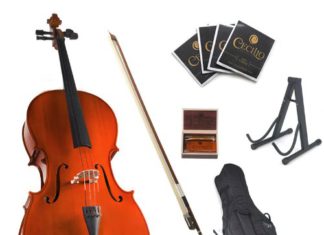In addition to the importance of learning how to play, one needs maintain the quality of their instrument. Just like any other string or wood-based instrument, the cello is constantly exposed to different stresses such as string pressure and weather changes. Here are a few things you need to check in order to keep your cello in its best playing shape.
Temperature and Weather Protection
Like many things in our lives, the cello is susceptible to damage from the constantly changing weather. The most obvious is temperature. We all know that leaving your cello in the car on a hot a summer day isn’t the best idea. Nor is leaving it in the basement when the snow starts to fall. Make sure to keep your cello indoors where the temperature remains mild.
Often overlooked however, by beginners and professionals alike, is humidity. Wood reacts quite drastically to humidity changes by either absorbing a lot of moisture or drying out. The extremes of either for long durations of time can cause severe damage. In addition, constant movement between different humidity shifts can cause just as much, if not more, damage. Unfortunately for most of us, weather changes with seasons and even just on day to day basis. Weather it an abnormally hot day or a rain storm rolls through, our daily lives can have a negative effect on our instruments. So what can we do it to prevent any damage?
First off, I mentioned earlier the very obvious step of leaving your instrument indoors as much as possible. Although obvious, this is an important first step to maintaining your cello’s playability. Now for humidity control. If you have a room or home where you can constantly check and maintain the humidity, then leave your cello in there when not playing. For those who want something easier and less costly, there are great in-case options.
The most classic and standard way is through use of Damp-Its. These are a great option to make sure the moisture levels inside the case stay exactly where you need them. Damp-its can sometimes be a bit messy if not taken care of and can cause water damage if done incorrectly. Luckily there are many companies out there that have created humidity systems that cleanly maintain the moisture. A brand to check out for products like this is Planet Waves.
Specific Part Maintenance
Besides the wooden bodies moisture level, there are some other key pieces of the instrument that need to be regularly checked and worked on. Here are the specifics:
- Bridge
- Due to how fragile this piece is, the bridge needs to be carefully checked every so often after playing. It needs to stay in an upright and vertical position, but normal playing can make it bend or tilt. Check the vertical alignment of the bridge every so often by making sure the bridge and cello are at a right angle. Even better, have a professional adjust it when it has moved to ensure it is properly aligned and not warped.
- Bow
- Like other string instruments, the cello’s bow needs to maintained and cared. The first step is making sure to loosen your bow after playing. This needs to be done every time. Although the occasional miss won’t necessarily cause detrimental damage, it is important to not make a habit of it because extensive periods of time left taught can severely shorten the life of your bow and cause warping of the wood. After periods of use, the bow will need to be re-haired. Depending on how much you play determines how often hair should be replaced. Check every few months to see if the bow needs to be re-haired. If it does, most local music shops will do it for around $40-$70.
- Strings
- Luckily, strings on the cello don’t need to be changed as regularly as say the guitar or electric bass. However, replacing the strings at least once a year is highly recommended. The instrument will continue to play, but tuning old strings can become an issue as well as a significant loss in tone. Waiting too long can also cause the strings to unravel and eventually snap which can lead to dangerous circumstances.
Repair Work
The design of the cello lends itself well to general repair work. Cracks and other minor damages like the opening of seams can be easily fixed by a good repair worker. Occasionally, a fingerboard may need to be dressed a bit to maintain smoothness across the entirety of the board. As mentioned earlier, the bridge can warp over time without proper maintenance. However, over time even a well-kept bridge can loose its shape. These can be fixed fairly easily, but if a bridge is in really bad shape, it can be replaced all together.
General Cleaning
Like most things, it’s a good idea to clean your instrument regularly. Simple things like washing your hand before playing can make the job that much easier. Wiping down your cello after playing is another great idea to remove the rosin build-up, and even the occasional polishing will do. Rosin dust builds up overtime and can hurt the tone of your cello, so wiping down and polishing it on a fairly regular basis can help a tremendous amount.
All in all, maintain a cello isn’t all that difficult once you learn all the steps it takes and purchase the necessary equipment. Once you find a way to maintain humidity, simply keep it clean and occasionally check for wear on things such as your strings, bridge, and bow, and make adjustments if necessary. Maintaining your cello ensures playability and extends the life of your instrument. The cello should inspire you to play it, and with proper care you can make sure it does just that.







